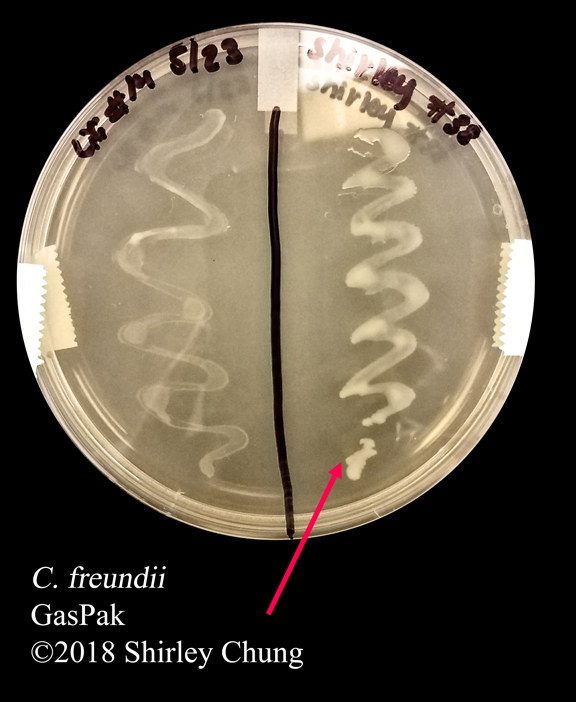Anaerobic GasPak System (Cappuccino & Welsh, 2017).
Description. The GasPak is a sealed jar system that produces an anaerobic (non-reducing) environment for observing organism growth. Inside the jar, a foil package creates hydrogen and carbon dioxide when water is added. The palladium catalyst on the lid combines with any oxygen in the jar to form water. A methylene blue indicator strip inside the jar becomes colorless in the absence of oxygen (opening the jar and exposing this strip to free oxygen will turn it blue again). If bacterial growth is observed in the presence of air (as in standard tryptic soy agar cultures at 37°C in the incubator) and bacterial growth is observed using the GasPak system, then the bacteria may be classified as facultative anaerobe.
Clinical significance. It is important to know the oxygen requirements of an organism as this important fact can dictate different treatment protocols especially with deep wounds.
Summary of main steps. It is assumed that the reader knows aseptic technique and basic inoculation.
- Inoculate (single line streak) a tryptic soy agar plate with your bacterial culture.
- Place your TSA plate (upside down with lid on the bottom) inside the GasPak system.
- Add 10ml of water to the gas generator and seal the jar.
- Incubate the GasPak system at 37°C for 24-48 hours.
Reference
Cappuccino, J. G., & Welsh, C. (2018). Microbiology: A laboratory manual.

